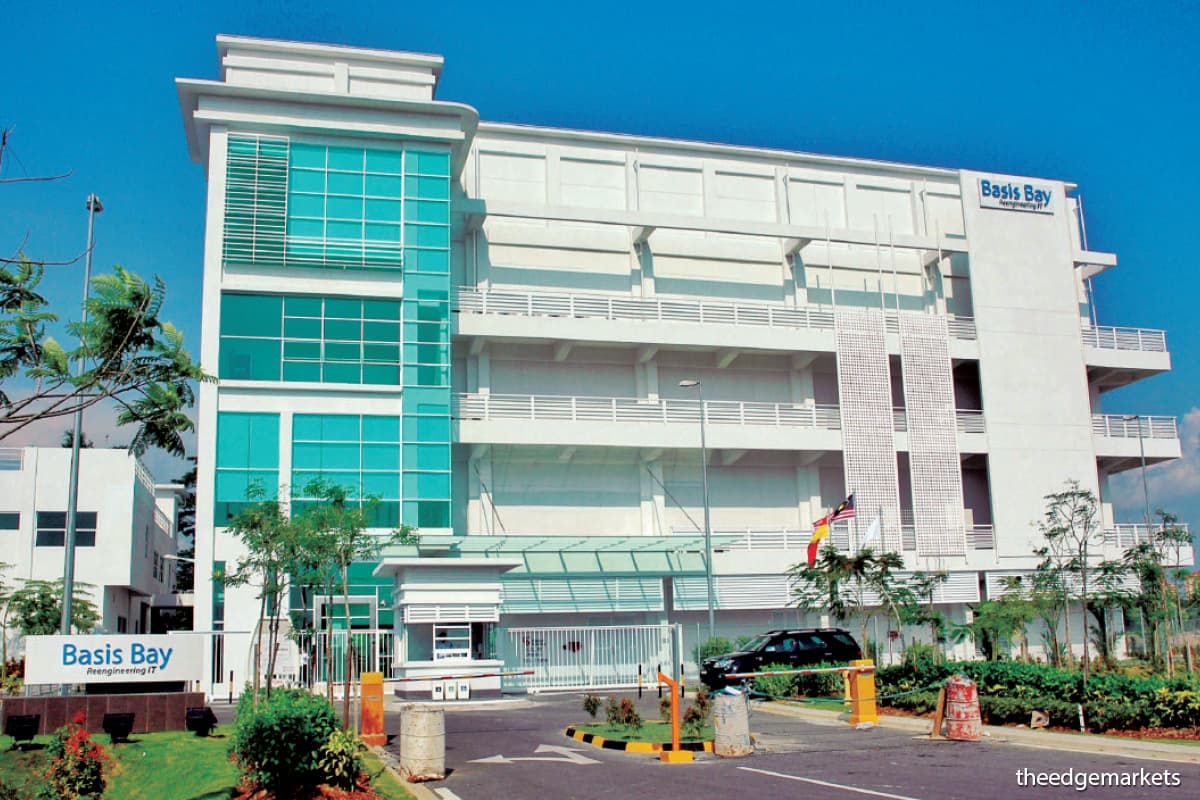
This article first appeared in Digital Edge, The Edge Malaysia Weekly on February 8, 2021 - February 14, 2021
In the wake of the pandemic, Southeast Asia saw 40 million users go online for the first time. This was directly attributed to the surge in demand for digital services such as e-commerce, food delivery and online payments, according to Google.
As more businesses transition their operations online, IT services have to be resilient enough to keep up with the demand because more users equals more data travelling through the networks.
Basis Bay, a home-grown IT infrastructure services and sustainable cloud provider, plans to capitalise on the growing demand for data centres and hybrid cloud. “Our next sustainable data centre will be built in Cyberjaya this year, which will have one of the highest MW (megawatt) capacities in Southeast Asia. We also plan to expand in the Northern Corridor and Iskandar regions in the coming years,” Datuk Praba Thiagarajah, its founder and CEO, tells Digital Edge.
The company, whose clientele includes financial institutions and multinational corporations in the region, believes that cloud adoption will be the backbone of digital Asean. “The government is working towards establishing Malaysia as the next data centre hub in Southeast Asia as part of the digital economy plan,” says Praba.
The global data centre market is expected to grow to US$26.1 billion by 2025 from US$19.1 billion in 2020, according to market research company MarketsandMarkets.
Asia is fast becoming the most important destination for the data centre industry because of resource availability and growing demand. In Asean, cloud services remain resilient and maintain a robust growth, says global market intelligence firm International Data Corp (IDC).
“The acceleration around the adoption of digital transformation initiatives in the region is expected to be heavily driven by cloud: automation, business resiliency, continuity, communication and collaboration tools, as well as data analytics,” says IDC.
Singapore is often seen as the undisputed front runner in this field, according to global commercial real estate services firm Cushman & Wakefield’s Data Centre Advisory Group.
Singapore’s low tax environment has made it an attractive destination for providers such as Amazon’s AWS, Google, Facebook and Alibaba Cloud for the expansion of their data centre infrastructure. However, the island nation is facing a slight pushback following the moratorium on the construction of new data centres in 2019. This was largely due to land constraints as data centres in the city state are already being housed in four-storey buildings.
Keppel, a Singapore-based investment holding and management company that engages in offshore services, has taken data centres to sea by constructing floating data centres that are similar to offshore rigs.
Digital News Asia reports that this will have a “spillover effect”, which will benefit neighbouring countries such as Indonesia, Thailand and Malaysia.
“The pandemic is without a doubt accelerating cloud adoption in Malaysia, especially for the banking and finance industry,” says Praba.
However, for Malaysia to compete alongside foreign players, local companies have to rise to the challenge.
There is a misplaced lack of confidence in our local capabilities, says Praba. “Industry players need to take a leadership role in providing infrastructure services in the region, and not focus purely on Malaysia as a market.”
In a report by Data Storage Asean, a regional news portal that focuses exclusively on data, Malaysia and Indonesia are seen as rising stars that can offer ease of access and lower cost of entry compared with Singapore, not to mention an abundance of land mass. It adds that sustainable growth remains a top priority for Asean countries.
The report highlighted Southeast Asia’s climate as an additional impediment to long-term growth. Since Malaysia boasts a tropical climate, the data centres need to be designed for hot and humid weather in order to be sustainable.
“Green IT, including green data centres, is designed with optimum efficiency with the least amount of impact on the environment. It starts with our holistic approach to smart procurement, extending the product life cycle of equipment, optimisation of IT infrastructure and developing green best practices,” says Praba.
In addition to physical and geographical considerations, political stability is vital to the data centre industry, says Cushman & Wakefield’s Data Centre Advisory Group.
With attractive rates, local talents and much larger physical capabilities, Malaysia has the potential to capitalise on the growing demand for data centres.
Save by subscribing to us for your print and/or digital copy.
P/S: The Edge is also available on Apple's AppStore and Androids' Google Play.